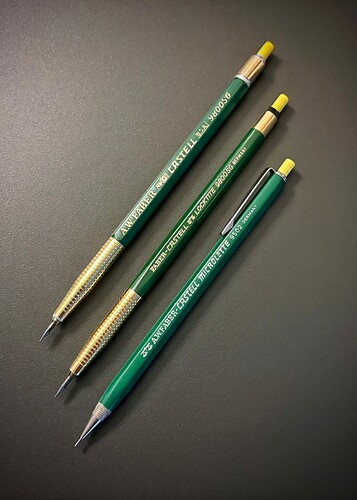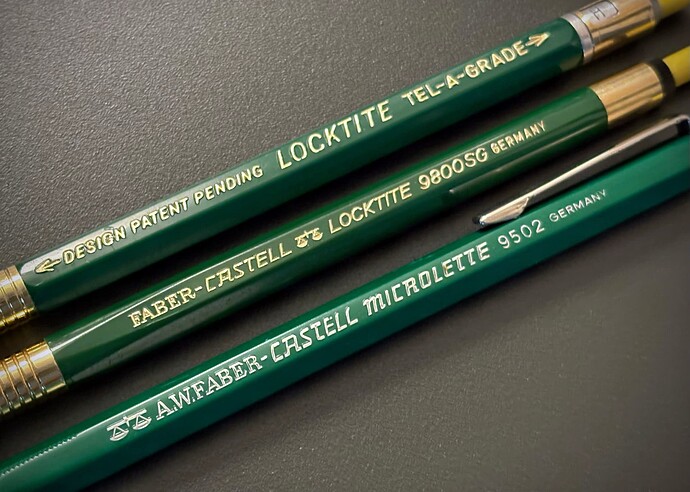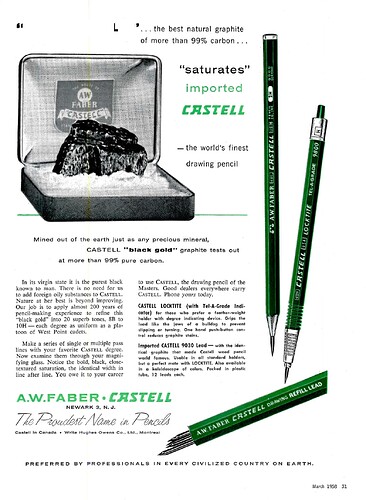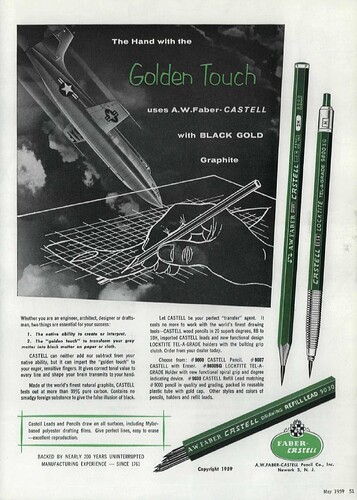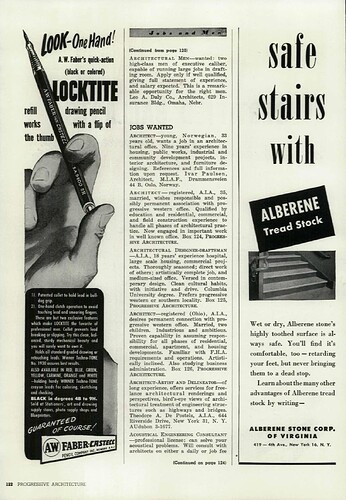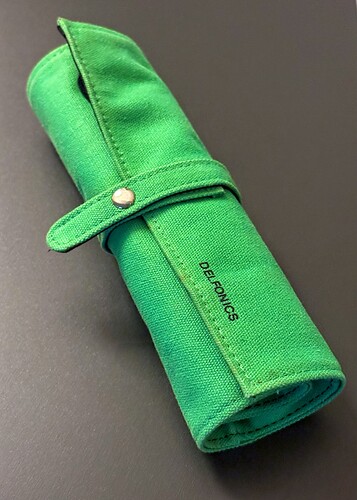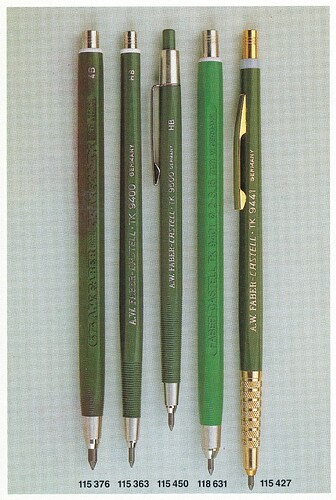You can’t plan for everything but sometimes things just turn out right. My first FC Locktite 9800SG was a Germany version with a yellow button. I was just getting into vintage drafting leadholders like the KIN 5617 Select-O-Matic and was attracted to the 9800’s golden grip and adjustable lead degree display.
I learned that ‘Locktite’ was FC’s marketing term for its very reliable clutch design; I guess not every brand could hold on to the lead and not let it spin in place when you crank up a lead pointer! And… the ‘SG’ stood for ‘Sure Grip’, yet another marketing term for its tapered and grooved grip design. I guess this was FC’s marketing direction back in the 1970s – to advertise every competitive feature and advantage it possessed!
Then a couple months go by and out of the corner of my eye, I spotted another listing for a 9800SG that somehow appeared just a little bit different. It was a A.W. Faber-Castell USA version! The grip was still golden, the ‘Locktite’ moniker was still there and so was the lead degree display. But some details were different… and very cool!
On the opposite side of the body was yet MORE marketing speak: Pointing to the front we see ‘DESIGN PATENT PENDING’, i.e. this was earlier than the Germany version. After the big ‘LOCKTITE’, we see a very charming ‘TEL-A-GRADE’ pointing to the adjustable lead degree display. This felt totally at home with the ‘Atomic Age’ of advertising from the 50s through the 60s, just like KIN’s ‘Select-O-Matic’ or ‘CinemaScope’, etc. Lastly, the lead degree display was a simpler design: instead of turning ridged dial set inside a fixed cutout window on the Germany version, you simply twisted the entire outer casing around the stamped letters on the inside.
I later checked and found that the USA version (pre- ‘SURE GRIP’) goes back to around 1958 based on print ads I found in issues of Progressive Architecture. The 9800SG would appear a year later in 1959. I also found that the ‘LOCKTITE’ branding was featured on the 9400 model from even earlier in 1948:
Not long after, I learned about the MICROLETTE 9502 and as luck would have it, it also came with a yellow button. Not sure if I will pursue the TK 9501 as current prices seem to be mirroring the more sought after Japanese vintage pieces.
Wrapping up: I bought an old stock Delfonics roll pen case in green to keep my vintage FCs in one handy and accessible place.
It feels strange to me sometimes, that mechanical pencils and lead holders were pretty much ‘perfected’ over half a century ago! All I need to do is load them up with some modern polymer leads and I’m good to go. What’s your favorite FC?
